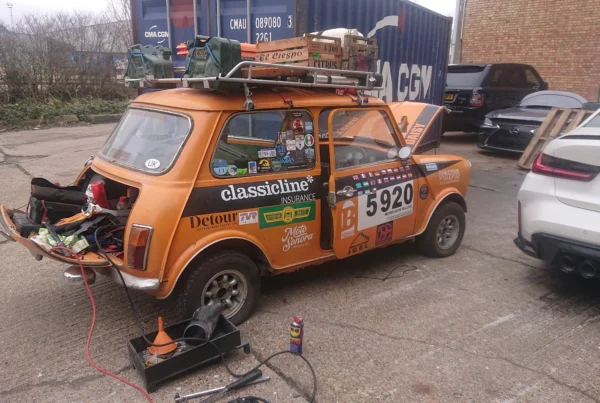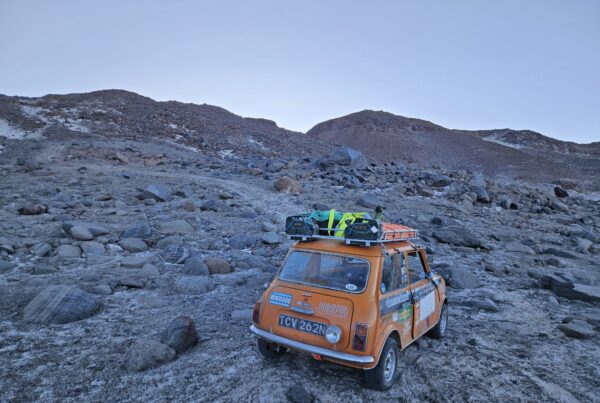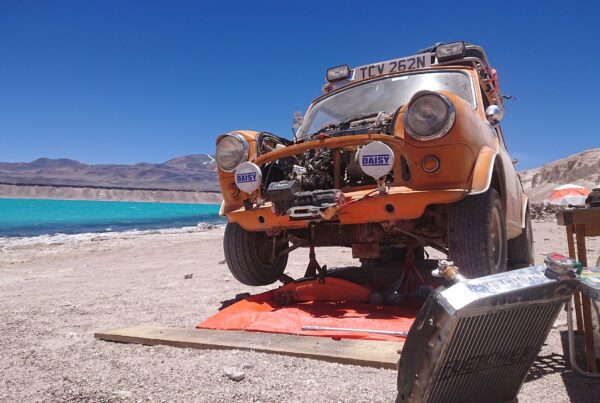What happens when you pit your newly restored classic against a 900 mile European road trip? ClassicLine’s resident road tripper, Ben Coombs picks up the story…
You can check and double-check every nut and bolt on your newly restored classic, test every component, take it on local test runs to your heart’s content. But ultimately, there’s only one way to gain full confidence in your pride and joy when it’s just been returned to the road after a lengthy lay-up.
You need to go on a proper trip.

After several years of restoration, my supercharged 1974 Mini had finally covered its first tentative miles at the end of the winter. Those initial drives were accompanied by a hefty degree of nerves, senses tuning into every changing noise, every new vibration. A run around the block was an event; a 40 mile trip across Devon a major adventure. And while ultimately, these short journeys seemed to be gradually coaxing out the inevitable small issues, ultimately, I knew that to truly trust Daisy the Mini again, a proper road trip was needed. So fittingly, on April Fool’s Day, with the Mini loaded up to the newly fitted headlining with a huge bell tent and its accompanying woodburning stove, I set course for France.
When I left Devon, Daisy had covered less than 200 miles in the previous twelve years. On arrival at the campsite south of Paris, another 500 miles had been added to that total in a single day.
So, how did it go? Mostly good, with a few black marks, I would say.

On the positive side, the Mini made it – which was by no means inevitable. And it made it without anything falling off, and furthermore, without any really serious problems. Its rather low final drive means it’s not the most relaxing mode of transport over long distances, with 50 mph equating to 3,200 rpm on the tacho, meaning that my mechanical sympathy for the recently rebuilt engine restricted us to a rather slow journey along the autoroute. But that’s fine, as I never intended Daisy to be some kind of gallivanting autobahn mile muncher. However, hour after hour of relatively high speed running, with the accompanying build-up of heat and pressure, did bring out a few further issues – an oil leak onto the supercharger drivebelt which proceeded to throw oil absolutely everywhere, and a coolant leak to boot, both of which required periodic topping up in the course of the drive.
But it made it, and the result was two weeks of much needed holiday in France. And while there, pottering around the French countryside at much lower speeds, the oil leak went on holiday too, while the coolant leak dried up in sympathy. And as a result, Daisy became a pretty ideal way to potter into town to collect the morning baguette or head a little further afield to take in some sights.
Maybe not quite as ideal as a 2CV would have been, perhaps, or a Traction Avant, but it was right up there. And the French general public loved it, with smiles being raised everywhere it went. And after two years of hard work bringing it back to its former glory, rewards don’t get much better than that.

For the return journey, we headed to Brittany, from where the ferry would deliver us directly home to Devon, and this journey proved to be more difficult than the outbound leg. The rain poured, limiting visibility and bringing a sluggish wiper motor to our attention. The oil leak worsened, as did the coolant leak, necessitating frequent stops to top up, and resulting in progress being made with half an eye continuously on the temperature gauge. But we made it, and 905 miles after leaving the UK, Daisy the Mini was finally back in the workshop where, for the previous two years, she’d been restored to the road.
Naturally, there’s now some work to do. The coolant leak appears to be coming from the corner of one of the head gaskets, which sits between the cylinder head and the decompression plate, while the oil leak has been traced to the main pulley seal on the end of the crankshaft, which is why it so quickly found its way onto the supercharger drive belt, and then, shortly afterwards, everywhere else.
But a day in the workshop should have both of these issues fixed, and if that’s the limit of the problems which this baptism of fire has revealed, I’ll take that as a win. Confidence in a newly restored classic is hard won – especially when you’ve done all the work yourself – and the fact the rest of the car has worked near flawlessly means I’m considerably more confident about using it for ever bigger and more challenging adventures in the future.
And speaking of the future, after this trip the future’s bright. Because it’s orange…




